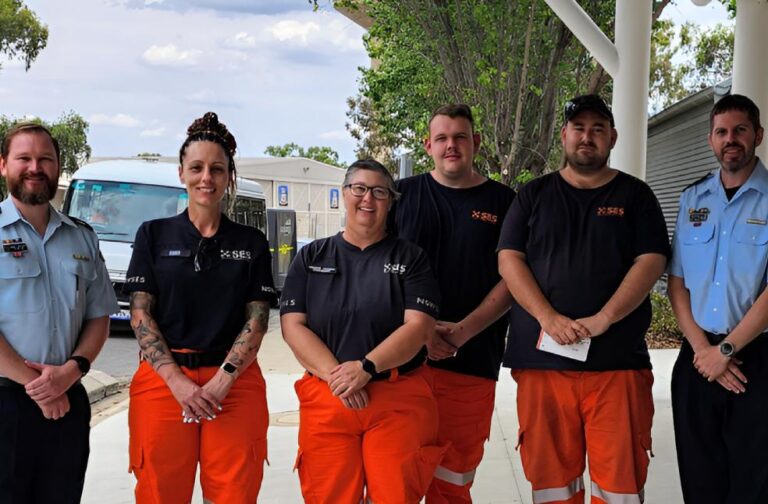South Wales: Severe thunderstorms were swept across New South Wales and eastern Victoria, triggering flash flooding, destructive winds, and hail. The Bureau of Meteorology (BoM) warned that extreme weather conditions would persist into next day.
A major storm system moved through Sydney’s CBD around midday, bringing dark skies and torrential rain. By mid-afternoon, Observatory Hill had recorded 52.8mm of rain since 9am, while Horsley Park, 50km west of the city, registered 87.8mm.
Between noon and 2pm, the NSW State Emergency Service (SES) carried out 21 rescues for people trapped in floodwaters in Sydney’s metropolitan area. A spokesperson urged locals to avoid flooded roads, emphasising the dangers of sudden flash flooding.
Since midnight, the SES had responded to over 500 calls for assistance, with reports of downed trees, roof damage, and sandbag requests, notably in southern and central-western NSW and metropolitan Sydney.
The storm system yielded powerful winds and large hailstones across several regions. Boorowa, Harden, and Temora recorded hail measuring between 2cm and 6cm in diametre.
Senior meteorologist Jonathan How warned of the potential for damaging to destructive winds throughout the day. Jonathan stated that, “We have seen some high rainfall totals building up as these storms move through, with plenty more showers to come.”
The BoM issued a severe thunderstorm warning for heavy rainfall, large hail, and destructive winds across the central tablelands, central-west slopes and plains, and parts of the Hunter, southern tablelands, north-west slopes and plains, south-west slopes, and lower and upper western districts. Miriam Bradbury, a senior meteorologist, warned that the risk was not yet over, particularly for areas west of the NSW ranges, which were bracing for “high-end severe thunderstorms” with wind gusts of up to 125km/h.
Bradbury explained that, “The driving factor of this wet, stormy weather is a low-pressure trough lying through NSW. It’s drawing in moisture from the north and off the ocean, feeding into showers, storms, and rain areas that develop. It’s fairly stagnant and not moving quickly.”
Severe weather warnings were issued for the NSW south coast, impacting Batemans Bay, Eden, Bega, Moruya, and Merimbula. In Victoria, heavy rain continued over East Gippsland, with severe thunderstorms forecast for the north-eastern parts of the state.
Thunderstorms were also expected to reach Melbourne’s outer suburbs by Monday afternoon. Eastern NSW can expect lingering wet weather, with drier conditions anticipated by 13th February onwards.
Authorities are urging residents in affected regions to stay updated with weather warnings and follow advice from emergency services. Severe thunderstorms bring torrential rain, destructive winds, and dangerous hail as authorities issue urgent weather warnings.



